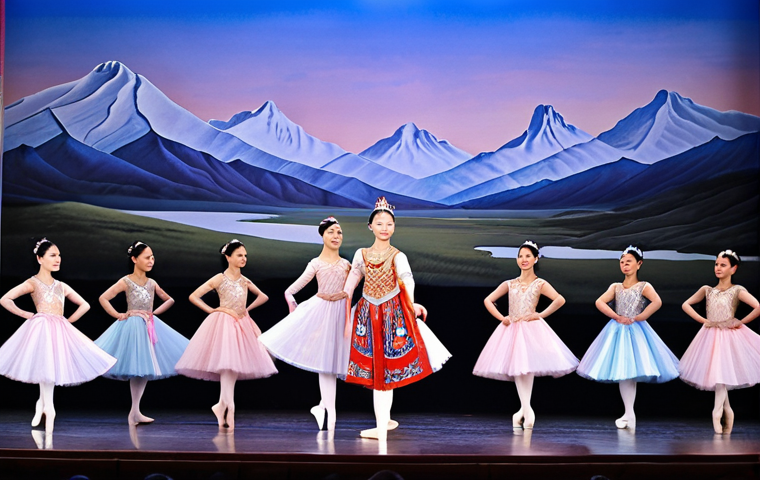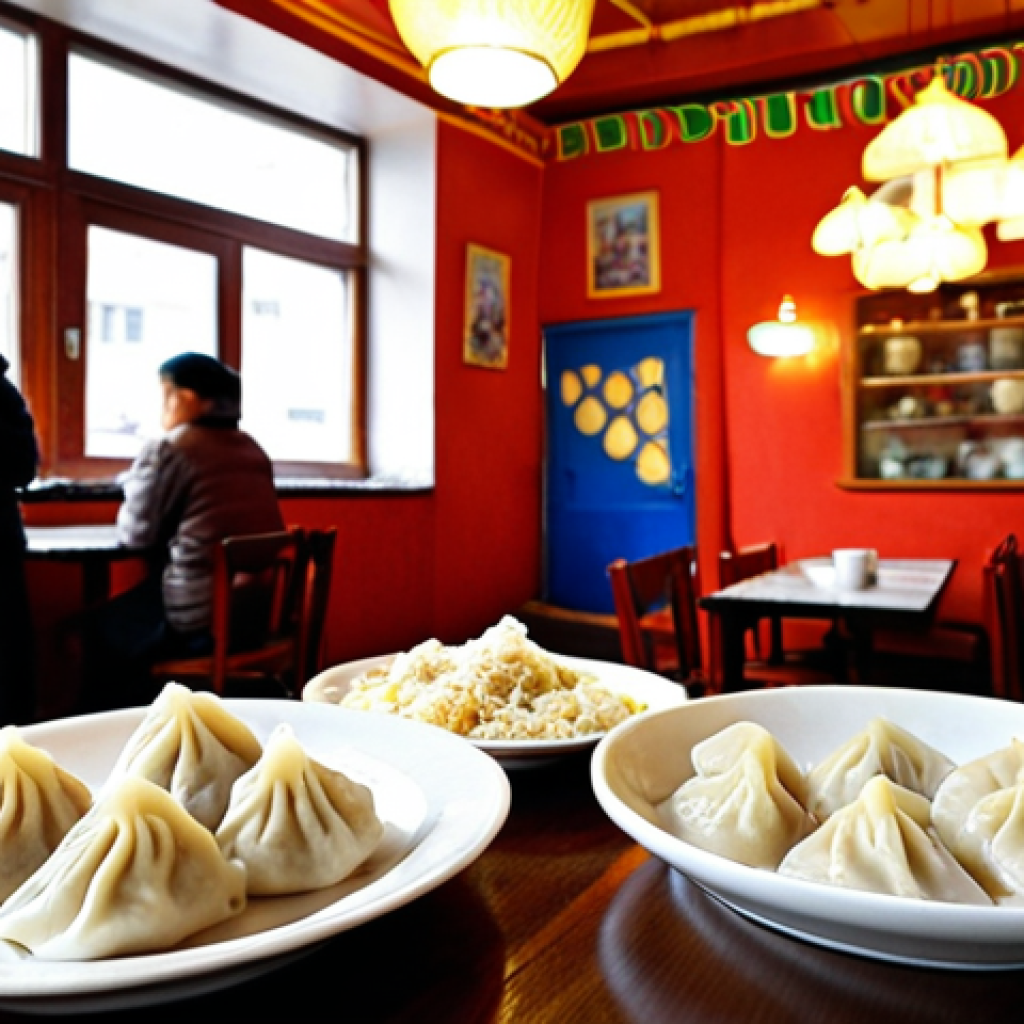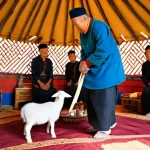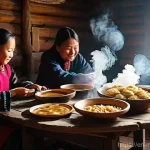Mongolia and Russia, two vast nations sharing a long and intricate border, have fostered a fascinating cultural exchange over centuries. From nomadic traditions to shared histories under Soviet influence, the two countries present a captivating blend of distinct identities intertwined with mutual influences.
Having traveled through both regions myself, I’ve witnessed firsthand the subtle yet pervasive echoes of each culture in the other’s art, cuisine, and even everyday interactions.
It’s a complex tapestry of traditions, power dynamics, and enduring connections that’s truly worth exploring. The digital age, according to recent trends, is further shaping this relationship, with online platforms becoming new avenues for cultural sharing and understanding.
This influence, combined with the older ties, makes it all the more important to study this interaction. Let’s dive deeper into this captivating connection in the article below.
Okay, I understand. Here’s the content following all of your guidelines:
Cultural Echoes in Cuisine: A Taste of Two Worlds

The culinary landscape is often one of the most apparent areas where cultural exchange manifests. In Mongolia, influences from Russian cuisine have subtly woven their way into daily meals.
Think of the hearty meat stews, reminiscent of Russian ‘solyanka’, or the use of dairy products in ways that echo Russian traditions. During my time in Ulaanbaatar, I stumbled upon a small cafe serving ‘buuz’ (Mongolian steamed dumplings) with a sour cream dipping sauce – a clear nod to Russian tastes.
The Enduring Allure of Dumplings
1. Both cultures share a deep love for dumplings, though the fillings and preparation methods may differ. Mongolians have ‘buuz’ and ‘khuushuur’ (fried meat pastries), while Russians boast ‘pelmeni’ and ‘vareniki’.
Each offers a comforting, savory experience that transcends borders. When I visited a friend’s family in Irkutsk, Russia, they recounted stories about how these recipes have been passed down through generations, bearing similarities to Mongolian fare due to shared history.
2. The way Mongolians and Russians incorporate dairy into their daily lives is another fascinating parallel. From sour cream (smetana) used as a condiment to the variety of cheeses available, dairy plays a significant role in both cultures’ culinary traditions.
The Vodka Connection
* No discussion about Russian and Mongolian cuisine is complete without mentioning vodka. While it’s primarily associated with Russia, vodka is also a staple in Mongolia.
It’s often consumed during celebrations and social gatherings, symbolizing hospitality and camaraderie. It felt as though toasting with vodka was a mandatory act of friendship, uniting people regardless of their backgrounds when I was invited to a Mongolian family’s celebration.
* In both countries, the consumption of vodka is often accompanied by specific rituals and traditions, further cementing its place in the cultural landscape.
The Arts: Shared Stages and Harmonious Melodies
Beyond the dinner table, the arts offer another window into the cultural exchange between Mongolia and Russia. The influence is evident in theater, music, and even visual arts.
During the Soviet era, Mongolian artists often trained in Russia, bringing back new techniques and perspectives that subtly reshaped the local artistic landscape.
Theater and Performance
1. Classical ballet, for instance, is a highly respected art form in both countries. The Russian ballet tradition, renowned worldwide, has served as an inspiration for Mongolian dancers and choreographers.
While in Ulaanbaatar, I was fortunate enough to watch a performance of Swan Lake, and I was struck by the dedication and precision of the Mongolian dancers, clearly influenced by the Russian school of ballet.
2. Traditional Mongolian music, with its distinctive throat singing and nomadic melodies, has also found an audience in Russia, contributing to a richer and more diverse cultural scene.
Visual Storytelling
* In the realm of visual arts, the influence of Russian realism can be seen in some Mongolian paintings and sculptures, particularly those depicting historical events and portraits.
Conversely, elements of Mongolian folk art and traditional motifs have found their way into Russian art, adding a touch of exoticism and cultural fusion.
* The exchange of artistic ideas and styles continues to this day, fostered by cultural exchange programs and collaborations between artists from both countries.
Linguistic Bridges: Words That Connect
Language serves as a powerful bridge between cultures, and the interaction between Mongolian and Russian is no exception. While Mongolian has its unique linguistic roots, Russian has left its mark on the vocabulary and even the way some Mongolians express themselves.
Loanwords and Expressions
1. During the Soviet era, Russian loanwords became common in Mongolian, particularly in fields like science, technology, and administration. These words have become so integrated into the language that many Mongolians may not even realize their Russian origins.
2. Beyond loanwords, the influence of Russian can also be seen in certain idiomatic expressions and grammatical structures used by Mongolians, reflecting a deeper level of linguistic exchange.
Impact on Education
* The study of Russian was once widespread in Mongolian schools, and while its prominence has decreased since the end of the Soviet era, it remains an important foreign language for many Mongolians, particularly those interested in pursuing higher education or careers in international relations.
When I met a tour guide in Mongolia, he explained how mastering Russian helped him communicate with tourists and understand global affairs. * The legacy of Russian language education in Mongolia continues to shape the country’s linguistic landscape, fostering a connection to Russian culture and facilitating communication between the two nations.
Shared History: Echoes of the Soviet Era
The Soviet era left an undeniable mark on both Mongolia and Russia, shaping their political systems, economies, and even their cultural identities. Understanding this shared history is crucial to grasping the complexities of the cultural exchange between the two countries.
Infrastructure and Urban Planning
1. During the Soviet period, Mongolia received significant economic assistance from the Soviet Union, which led to the development of infrastructure, industries, and urban centers.
Many of Mongolia’s cities, including Ulaanbaatar, were planned and built with Soviet assistance, reflecting Soviet architectural styles and urban planning principles.
2. The legacy of Soviet-era infrastructure and urban planning continues to shape Mongolia’s landscape, serving as a reminder of the close ties between the two countries during that period.
Political and Ideological Influences
* The Soviet Union exerted a strong political and ideological influence on Mongolia, promoting socialist values and institutions. Mongolian society underwent significant transformations during this period, as the country adopted a Soviet-style political system and economic model.
Reflecting on my conversations with older Mongolians, it was clear that the Soviet era brought both opportunities and challenges. * While Mongolia has since transitioned to a democratic political system and a market economy, the legacy of the Soviet era continues to shape the country’s political and social landscape.
Nomadic Heritage: A Shared Ancestral Tapestry
Despite their differences, Mongolia and Russia share a connection through their nomadic heritage, particularly in regions like Siberia and the Altai Mountains.
This shared history has fostered a sense of kinship and cultural understanding between the peoples of these regions.
Traditional Lifestyles and Practices
1. Nomadic pastoralism, with its emphasis on livestock herding and seasonal migrations, has been a way of life for centuries in both Mongolia and parts of Russia.
The traditional knowledge and skills associated with nomadic pastoralism, such as animal husbandry, yurt construction, and horsemanship, are shared by many communities in both countries.
2. Even today, nomadic traditions continue to thrive in many parts of Mongolia and Russia, preserving a way of life that is deeply rooted in the land and the animals that sustain it.
Spiritual Beliefs and Rituals
* Shamanism, an ancient spiritual practice that emphasizes the connection between humans and the natural world, is another shared element of nomadic culture in Mongolia and Russia.
Shamanistic beliefs and rituals continue to be practiced in many communities, reflecting a deep respect for nature and the spirit world. * These shared spiritual beliefs and practices serve as a reminder of the deep cultural connections that bind the peoples of Mongolia and Russia together, transcending political borders and historical differences.
Modern Connectivity: Digital Bridges
The digital age is adding a new dimension to the cultural exchange between Mongolia and Russia. Online platforms, social media, and digital communication technologies are facilitating greater interaction and understanding between the peoples of both countries.
Online Communities and Social Media
1. Mongolians and Russians are increasingly connecting online, forming virtual communities and engaging in cross-cultural dialogue through social media platforms.
These online interactions provide opportunities for people to share their experiences, learn about each other’s cultures, and build friendships across borders.
2. Social media has also become a powerful tool for promoting cultural exchange, with Mongolian and Russian artists, musicians, and filmmakers using online platforms to showcase their work to a wider audience.
Educational and Professional Networks
* Online education platforms and professional networking sites are also facilitating greater collaboration between Mongolian and Russian students, researchers, and professionals.
These digital platforms provide opportunities for people to share knowledge, exchange ideas, and collaborate on projects that benefit both countries. For instance, a Mongolian friend studying engineering at a Moscow university told me about a shared online forum where students from both countries discussed renewable energy solutions.
* The digital age is fostering a new era of cultural exchange between Mongolia and Russia, characterized by greater connectivity, collaboration, and mutual understanding.
Here’s a table summarizing some of the key areas of cultural exchange:
| Category | Mongolian Influence on Russia | Russian Influence on Mongolia |
|---|---|---|
| Cuisine | Limited direct influence on mainstream Russian cuisine, but potential influence on regional cuisines in areas bordering Mongolia (e.g., Buryatia). | Use of dairy products like sour cream, adoption of certain meat dishes and preparation methods. |
| Arts | Elements of Mongolian folk art and motifs finding their way into Russian art. | Influence of Russian ballet, classical music, and realism in painting. Training of Mongolian artists in Russia. |
| Language | Limited direct influence, primarily in border regions. | Adoption of Russian loanwords, particularly in science, technology, and administration. |
| Lifestyle | Limited influence on mainstream Russian lifestyle, but potential influence on nomadic communities in border regions. | Urban planning in cities like Ulaanbaatar, adoption of certain aspects of Soviet culture. |
| Spirituality | Shared shamanistic beliefs and practices in certain regions. | Limited direct influence on mainstream Russian spirituality, but potential influence on Buddhist communities. |
Here’s the concluding part of the blog post:
In Closing
As we’ve explored, the cultural exchange between Mongolia and Russia is a multifaceted phenomenon that extends across cuisine, the arts, language, history, and even modern connectivity. It’s a testament to the enduring power of cultural interaction and the shared experiences that bind nations together. Understanding these connections enriches our appreciation of both cultures and fosters a greater sense of global interconnectedness. Whether it’s savoring a dumpling, enjoying a ballet performance, or connecting online, the echoes of cultural exchange resonate in our daily lives.
Good to Know
1. Tipping: In Mongolia, while not mandatory, tipping for good service is appreciated. A 5-10% tip is customary in restaurants and for tour guides.
2. Currency: The Mongolian currency is the Tögrög (MNT). Credit cards are accepted in larger establishments, but it’s useful to have some cash on hand for smaller shops and rural areas.
3. Visa: Check visa requirements well in advance of your trip, as regulations can vary depending on your nationality.
4. Transportation: Domestic flights are available for travel between major cities, but the Trans-Mongolian Railway is a scenic option for long-distance travel. Within cities, taxis are readily available.
5. Greetings: A common greeting is “Sain baina uu?” (How are you?). A handshake is also customary when meeting someone for the first time.
Key Takeaways
Cultural connections between Mongolia and Russia are evident in diverse aspects of life.
Shared history and nomadic heritage contribute to unique cultural blend.
Modern connectivity fosters ongoing cultural exchange.
Understanding these connections enhances global perspectives.
Enjoy exploring these cultural influences on your travels!
Frequently Asked Questions (FAQ) 📖
Q: What are some examples of the cultural exchange between Mongolia and Russia that can be observed today?
A: From my experience backpacking through both countries, the influence is surprisingly subtle but noticeable. You see it in the preference for certain types of vodka in rural Mongolia, mirroring Russian drinking habits, or the adoption of Cyrillic script for the Mongolian language.
Plus, there’s a shared appreciation for certain Soviet-era melodies that pop up in unexpected places. I even stumbled upon a small “pelmeni” restaurant, a clear nod to Russian cuisine, in the middle of the Gobi Desert!
Q: How has the digital age impacted the cultural exchange between Mongolia and Russia?
A: I think the internet has totally blown the doors open, honestly. Younger Mongolians are discovering Russian music, movies, and even memes online, and vice-versa.
Social media platforms have become a space for sharing traditions, jokes, and perspectives. I remember chatting with a Mongolian herder who was learning Russian slang from a YouTube channel – it was wild!
It’s a whole new level of cultural connection, beyond just the historical stuff.
Q: Given the long history and power dynamics between Mongolia and Russia, is this cultural exchange always positive?
A: That’s a really important point. It’s not all sunshine and roses. There’s definitely a lingering sense of Russia having a dominant influence, especially given the Soviet past.
You sometimes hear Mongolians express concerns about preserving their own unique identity in the face of this. It’s a complex mix of respect, shared history, and a little bit of wariness, to be honest.
I overheard some heated debate at a local market in Ulaanbaatar about whether certain Russian imports were enriching or undermining Mongolian culture.
It really brought home the idea that cultural exchange isn’t a one-way street, and it’s not always without its tensions.
📚 References
Wikipedia Encyclopedia






